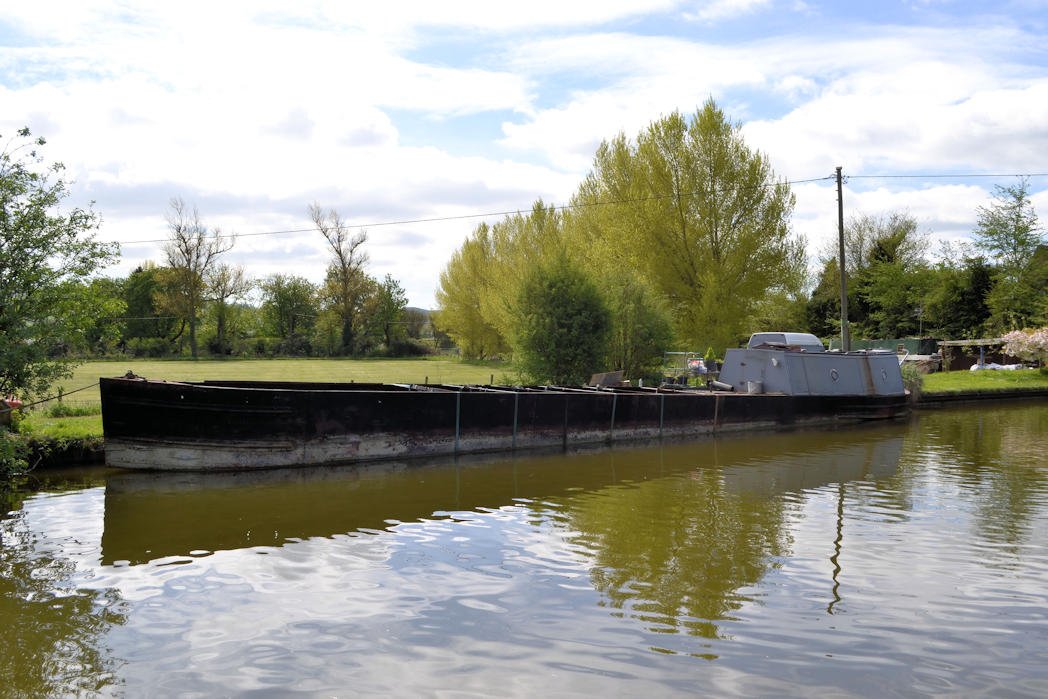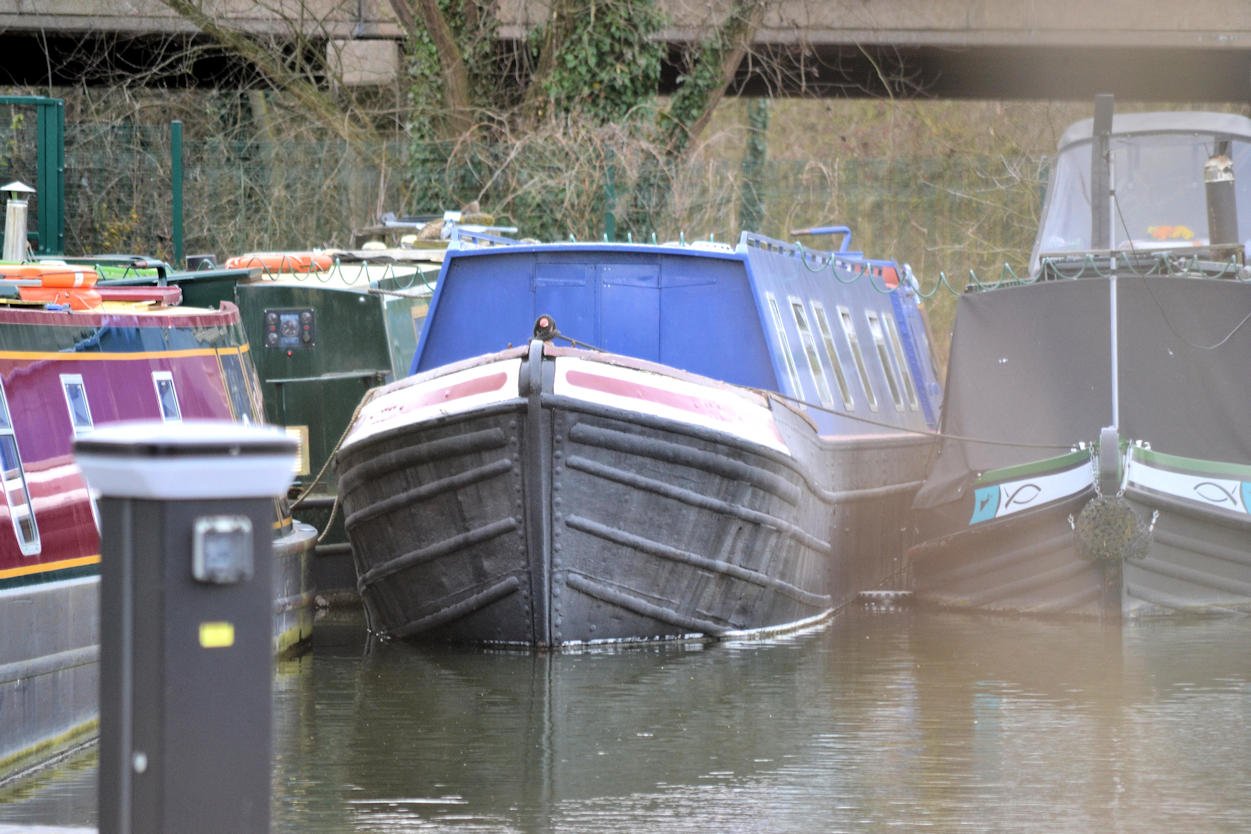-
Posts
52 -
Joined
-
Last visited
Content Type
Profiles
Forums
Events
Gallery
Blogs
Store
Everything posted by RogerM
-
Thanks for the info David
-
Can anyone get their teeth into this one? Ivinghoe Bridge, Grand Union. Looks like maybe a joey of some sort, with later additions.
-
Brilliant, thanks for that!
-
Anyone able to identify this boat, photographed in Circus Field Basin, Aylesbury on 14/03/18? Looks like a GUCCC boat, converted and possibly shortened (or that might just be the telephoto effect). Looks like it might have the original cabin on the back.
-

Harefield Flash, A Request From Graham Clutton
RogerM replied to Ray T's topic in History & Heritage
Oh lord preserve us, not the same Alf Roberts that plagued railway preservation forums with batty ideas about turning a sliver of the Dunstable branch into a heritage railway? -
A new one from today. A wooden motor outside Jem Bates' drydock at Bulbourne. The boat behind it is HOOD.
-
Not sure about Ariel. I've got a picture of a boat I'm fairly certain is Ariel and it doesn't seem to be the same boat as in your picture Ian:
-
Many thanks indeed Paul.
-
-
Positively nauseating.
-
How about MILTON MAID? Or does her unconventional design mean she isn't a Carrying Narrow Boat in the conventionally understood sense? A couple of shots of DUSTY here. I'd say she was purpose-built from the look of her but couldn't say for 100% sure.
-
"The kitchen is fitted with sick". Rather off-putting Edit: Athy beat me to it!
-
Ha! I was about to post a picture of that same butty that used to be with Hesperus. Thanks for info on Hardy Ian. Yes I agree it looks like Taunton. The windows on the conversion are very distinctive. Cheers.
-
..and the second is this wooden motor at Wolfhampcote in 2012. The butty behind it is ARGO, I believe.
-
I have a few long term residents of my "unidentified" file of working boat photographs. I'm hoping some of the knowledgeable folks on here might be able to pin down their identities. This first on is a converted wooden butty photographed at Kidlington on the Southern Oxford in 2013.
-
I was delighted to see Banstead at Paddington the other day, complete with "The Bargee" lettering. The chap on board, who I now know is Mike, kindly gave me the identity of the butty that was moored up with Banstead, Baron & Ash. A few pics: https://www.flickr.com/photos/rpmarks/18684590418/in/dateposted/ https://www.flickr.com/photos/rpmarks/18656192239/in/dateposted/ https://www.flickr.com/photos/rpmarks/18837229152/in/photostream/
-
Hobbacott Inclined Plane: https://www.flickr.com/photos/rpmarks/3778577627/in/photolist-7BwMc6-6KYiGj-6KUaEZ-6KYkNo-6KYjyU-6KUcu8 Werrington Inclined Plane: https://www.flickr.com/photos/rpmarks/3779381900/in/photolist-7BwMc6-6KYiGj-6KUaEZ-6KYkNo-6KYjyU-6KUcu8 Restored Rodd's Bridge Lock: https://www.flickr.com/photos/rpmarks/3779378966/in/photolist-7BwMc6-6KYiGj-6KUaEZ-6KYkNo-6KYjyU-6KUcu8 Bude Harbour sand tramway: https://www.flickr.com/photos/rpmarks/3779386046/in/photolist-7BwMc6-6KYiGj-6KUaEZ-6KYkNo-6KYjyU-6KUcu8
-

Harefield Flash, A Request From Graham Clutton
RogerM replied to Ray T's topic in History & Heritage
I suppose I am mildly sceptical about removal/restoration of vessels from Harefield Flash, although there may be exceptions that are viable and worth the effort. More pertinently though, it is imperative that the site is examined and the vessel remains are identified and recorded. The emphasis, in my view needs to be on archaeology above all else, with a conservation strategy that accepts natural degradation, whilst minimising unecessary human destruction of the artefacts. That is the kind of strategy that we've adopted at Purton. Happy to help in any way I can with the above. -
I have nothing particularly useful to add to this thread, but it is really good to know that THEOPHILUS has been bought by someone who appreciates her historic status.
-

Tree Class motors of the Severn & Canal Carrying Company
RogerM replied to Chris J W's topic in History & Heritage
Thanks for that -

Tree Class motors of the Severn & Canal Carrying Company
RogerM replied to Chris J W's topic in History & Heritage
I think this is the deconverted former "Ash 2", now carrying the name "M.B. Ash". Photographed at Paddington 9th March 2014. The Forum won't grab images from Flickr so I'll have to give URL links instead: http://www.flickr.com/photos/rpmarks/13100642535/ http://www.flickr.com/photos/rpmarks/13100905284/ -
I can't believe I got that wrong. How embarrassing! My excuse is that whenever I think of Yeovil Pen Mill it brings to mind this picture my dad took there in the early 1960s: The loco is an ex-Southern one and that is what put me off the scent!
-
The thing that convinced me about the station theory is that (contrary to what has been claimed earlier in this thread) several of the names refer to places that are really quite small villages e.g. Aynho, Calstock, Fulbourne, Padbury, Purton, Seascale, Starcross Staverton etc. That is just a few that I know are small off the top of my head but there are probably more. Now, if GUCCC had picked the names of 172 towns and cities in Britain then the fact that all of them had a railway station would not be significant. However, they didn't, they compiled a list that contained a significant number of small villages and yet it turns out they still all had a railway station. The odds of accidentally picking villages that all had stations is surely very low. It therefore points to the names having been compiled from a railway directory or some other list of railway stations.
-
I only suggest Bradshaw as a likely candidate, the names could just as easily have been drawn from individual railway company timetables or maps. I don't doubt the station signs used the modern spelling if you've seen the photographic evidence but that doesn't mean it was spelled that way on every railway document etc. This sort of inconsistency in station spelling has been seen in all sorts of places over the years (Hanborough/Handborough on the Cotswold Line for instance). It would be interesting to get hold of the Bradshaw for 1937 though
-
But could you really pick 172 places at random and guarantee every single one has a railway station? It seems very unlikely to me, despite the profusion of stations prior to Beeching.













